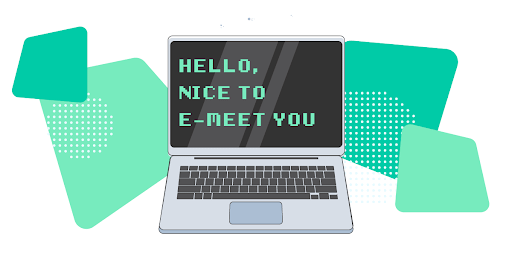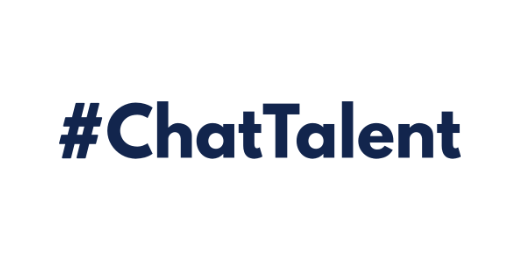If you’re reading this, you’re probably thinking something like:
“What the hell is a semi-sentient, voice-first, dynamic careers website?”
Bare with me… All will be explained below.
First of all, I can’t take all the credit for the idea. This blog is the result of a collaborative effort that took place on 25th July, when Recruitd hosted the first in a series of ‘Hack Your…’ events: each of which gathers together the brightest minds in our industry to tackle a different recruitment topic. This one focussed on Employer Branding.
My team, consisting of Laura, Ariadne, Norbert, Akbar, Josh and myself, sank its teeth into reinventing careers websites. After projecting our ideas and challenges onto our imaginary company called ‘Mitnick’, named after a famous hacker, we asked ourselves an interesting question.
What if you could create a dynamic careers website that, instead of forcing you to search and browse, would allow you to start a dialogue and tailor the content it displays automatically as the conversation unfolds?
How to Build a Dynamic, Conversation-First Careers Website
It seems all the technology needed is actually here already.
Recruitment chatbots like XOR, Mya, Ari, JobPal, Robo Recruiter, Recruitment Bot, VCV, Debra and many more are rapidly making their mark on the recruitment scene.
Many of them allow for playback of what candidates submitted, or even what they were typing and deleting, which already provides unique insight and data to shape the candidate experience around.
Now take this one (logical) step further and imagine allowing candidates to not just type, but actually talk to the bots. Alexa, Google Assistant, and Siri are proving this is already possible in households and with mobile devices on a daily basis.
Not only would the exchange significantly increase efficiency and make conversations more natural for candidates during the hiring process, but it would also allow hiring teams to track sentiment through voice recognition. That means recruitment teams could track what’s important for candidates via subliminal changes in their voice. Just have a look at how far Going.io takes this sort of thing already.
Now add a technology like Hirevue into the mix and you’d be able to capture thousands of additional visual data points as well, by monitoring body language, and facial micro-expressions.
Then integrate Crystal Knows and your website could automatically adjust its tone of voice, literally and figuratively speaking, to the visitor’s personality. All it would have to know is his or her identity.
This could be derived from source cookies, by asking visitors to engage with the website by logging into social media platforms like Facebook, LinkedIn, Instagram, Twitter, a Google profile through your website, or during the conversation.
The last thing you’d have to do is connect all of the above to your content management system(s), and – woohoo! – you’ve got yourself all the ingredients for a quasi-sentient, talking website that can automatically generate bespoke conversations and content tailored to each candidate’s objectives, personality and sentiment.
Ok Stan, you say, talking websites, eerily adjusted to my candidates’ personalities. I see why that would be interesting for my recruitment team and hiring managers, but…
Why on earth would candidates want to talk to a website, let alone share their identities in this GDPR protected and Cambridge Analytica-fearing age?
In Short: Candidates Will LOVE It!
Here are the reasons why candidates will thrive from a conversational approach to their career exploration and job search.
1. It’s natural
Humans aren’t wired to explore by writing, reading, and clicking. Modern humans have been around for approximately 200,000 years, and we’ve been communicating using speech since. Maybe even before that time, if you count the sounds our evolutionary ancestors made.
Cuneiform, the world’s oldest form of writing, was developed by the Sumerians of Mesopotamia ‘only’ c. 5,500 – 5,000 years ago, although it took the vast majority of the world’s population until the last century to become literate. No wonder we’re way more comfortable saying and hearing what we’re looking for over writing and reading.

2. It’s easier
Anyone using Amazon’s Alexa or Google Assistant knows how easy it is to order a pizza without lifting a finger; find out the weather without opening the curtains; turn on the lights without the flicking a switch; playing your favorite song without searching… Not a single device needs to be activated, no apps are opened, no typing or searching, and no personal details needed.
These principles also apply when trying to learn everything you need to know about an employer or career opportunity. Whether a candidate has questions about the culture, projects, achievements, goals, teams, or jobs. Being asked them directly prior to interview would save a ton of time on clicking and typing, significantly improving experience.
3. It’s tailored
A traditional website forces candidates to adjust to them, whereas a dynamic, conversation-first website would adjust itself to the candidate. Asking candidates questions and adjusting the content that it displays based on personalities, answers, tone of voice, body language and facial expressions is more technologically advanced – something that every talent demographic will appreciate, but younger or more technically-skilled talent will probably even demand.
How It Would Work
- Candidate lands on the careers webpage and turns on their sound, microphone and webcam to interact with the high-tech assistant
- The assistant asks why they’ve come to them today and the candidate speaks back to them
- A natural conversation commences on what brought them to their website, what interests them career-wise, what their objectives are and what the company can do to help
- As the conversation continues, the website automatically pulls up different relevant company resources in real-time, based on the candidate’s answers, demographic traits, and even frame of mind, as it listens to the tone of voice, while monitoring body language & facial expressions
Side note: This could be anything. Broader or niche focussed employer branding content. Information about projects. Employee testimonials or team stories. The company’s mission and values. D&I statistics. Stock performance and forecast. Glassdoor reviews. Social media channels. You name it. As long as it’s relevant to the conversation – it’s accessible in the conversation.
- If the candidate asks for more information about the wider industry, the page pulls information from the rest of the internet to answer questions and fill in any gaps
- If they are interested in the company’s vacancies, or meeting the team, the assistant pulls information from the candidate’s social media profiles to allow hiring managers or employees to connect and speak to them about the role
- They can book in time based on the synchronised schedule of hiring manager/s, to organise meetings or calls about the job. I can even imagine some roles, in the high volume vs low-skill segments for example, where the website could offer jobs and contract candidates right away
I could go on like this for a while, but hopefully this paints a sufficient picture for you to imagine the countless applications the above could have, and what the effect would be on recruitment efficiency and performance.
And if you’ve hopped on this train of thoughts, sprinkle a little bit of the much-discussed machine/deep learning pixie dust over it to watch it take off like Peter Pan, Wendy, and Michael on their way to Never Never Land.
Brilliant or BS?
So, what are you thinking? Will all of this remain a fictional-fairytale like James Matthew Barrie’s classic, or will it become fact like Steve Jobs’ vision?
I’m putting my money on the second, but then again, I might be off – so I’d love to hear your thoughts in the comments, or feel free to start a conversation and DM me at any time.
In the end though, it won’t be opinions, but actions, that determine the future of talent attraction… So, If anyone wants to try to actually build this vision, I’m up for that as well.
Looking forward to hearing from you!
Written by – Stanislaw Wasowicz
Co-Author – Jennifer Latimer
Illustrations – Diego Scarsella






